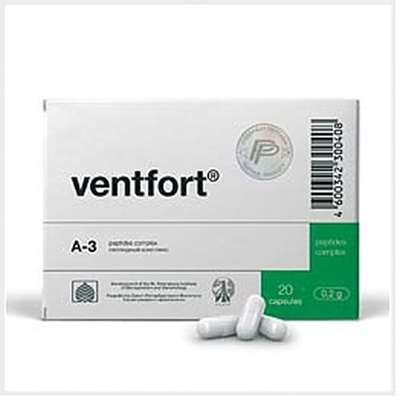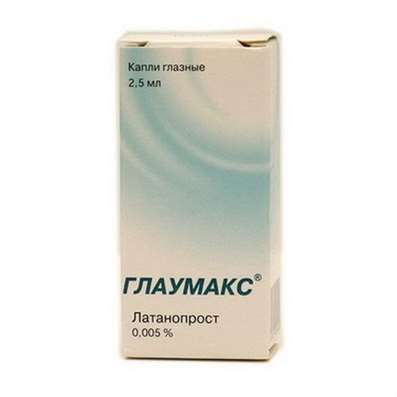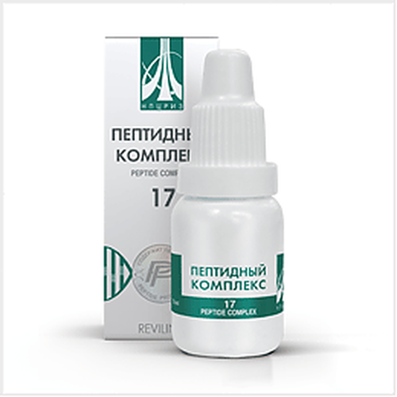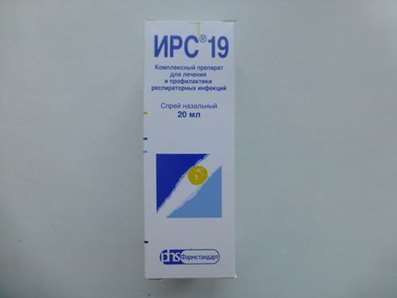Instruction for use: Arbidol Maximum
I want this, give me price
Arbidol 100mg 20 pills
Arbidol 200mg 10 pills
Dosage form: Capsules
Active substance: Umifenovirum
ATX
J05AX13 Umifenovir
Pharmacological groups:
Antiviral [Other immunomodulators]
Antiviral [Antiviral (excluding HIV) means]
The nosological classification (ICD-10)
A08.0 Rotavirus enteritis: Rotavirus gastroenteritis; Rotavirus infection; Acute intestinal infection due to rotavirus; Acute intestinal infection of rotavirus etiology
B00.9 Herpetic infection, unspecified: Herpes face; Herpes mucous membranes; Herpes-viral infections; Herpes-viral infections of various localizations; Herpetic infection; Herpetic infections; Herpetic lesions; Latent herpetic infection; Neonatal herpes; Recurrent herpetic infection; Chronic recurrent herpesvirus infection; Chronic recurrent herpetic infection; Acute herpetic disease of the mucous membranes; Recurrent herpes
J06 Acute upper respiratory tract infections of multiple and unspecified locations: Frequent colds of viral diseases; Infections of ENT organs; Acute respiratory illness of influenza nature; Pain for colds; Acute catarrhal disease; Cold; Colds; Colds; Respiratory infection; Seasonal catarrhal disease; Seasonal colds; Pain in infectious and inflammatory diseases of the upper respiratory tract; Bacterial infections of the upper respiratory tract; Bacterial infections of the respiratory system; Viral respiratory disease; Viral respiratory tract infections; Inflammatory disease of the upper respiratory tract; Inflammatory diseases of the upper respiratory tract; Inflammatory diseases of the upper respiratory tract with difficult to separate sputum; Inflammatory respiratory disease; Secondary infections for colds; Difficult sputum separation in acute and chronic respiratory diseases; Upper respiratory tract infections; Infections of the upper respiratory tract; Respiratory tract infections; Respiratory and lung infections; Infectious-inflammatory diseases of the upper respiratory tract; Infectious-inflammatory diseases of the upper respiratory tract and ENT organs; Infectious-inflammatory diseases of the upper respiratory tract in adults and children; Infectious-inflammatory diseases of the upper respiratory tract; Infectious inflammation of the respiratory tract; Respiratory tract infection; Qatar upper respiratory tract; Catarrh of the upper respiratory tract; Catarrh of the upper respiratory tract; Catarrhal phenomena from the upper respiratory tract; Cough in diseases of the upper respiratory tract; Cough for colds; ARVI; ARI; ARI with phenomena of rhinitis; Acute respiratory infection; Acute infectious-inflammatory disease of the upper respiratory tract; Acute respiratory disease; Persecution in the throat or nose; Respiratory and viral infections; Respiratory diseases; Respiratory infections; Recurrent respiratory tract infections; Secondary infections with influenza; Influenza states; Feverish conditions for influenza
J10 Influenza caused by an identified influenza virus: Influenza A; Influenza B; Influenza A type; Influenza A of type B
J11 Influenza, virus not identified: Influenza; Influenza in the early stages of the disease; Influenza in children; cold in the chest; Begins flu-like condition; Acute disease parainfluenza; parainfluenza; parainfluenza state; influenza epidemics; The pains of the influenza
J18.9 Pneumonia, unspecified: Pneumonia in immunodeficiency states; Pneumonia with Legionnaires' Disease; Community-acquired pneumonia; Hospital-acquired pneumonia; Hospital pneumonia; Interstitial pneumonia; Respiratory infections; Non-pneumococcal pneumonia; Pneumonia
J22 Acute respiratory infection of lower respiratory tract, unspecified: Bacterial respiratory disease; Bacterial infections of the lower respiratory tract; Bacterial infections of the respiratory system; Viral respiratory disease; Viral respiratory tract infections; Inflammatory respiratory disease;; Difficult sputum separation in acute and chronic respiratory diseases; Respiratory tract infections; Respiratory and lung infections; Lower respiratory tract infections; Infections of the lower respiratory tract; Infectious inflammation of the respiratory tract; Infectious diseases of the respiratory tract; Infectious diseases of the lungs; Infectious diseases of the respiratory system; Respiratory tract infection; Cough for colds; Pulmonary infection; Acute respiratory tract infection; Acute respiratory viral infection; Acute inflammatory airway disease; Acute respiratory disease; Respiratory infection; Respiratory and viral infections; Respiratory syncytial viral infection in young children; Respiratory diseases; Respiratory infections
J39.8 Other specified disorders of upper respiratory tract: Disturbance of mucus formation in broncho-pulmonary diseases
J40 Bronchitis not specified as acute or chronic: Asthmatic bronchitis; Allergic bronchitis; Bronchitis allergic; Asthmatic bronchitis; Rhinotraheobronchitis; Asthmatic bronchitis; Bacterial bronchitis; Bronchitis; Bronchitis of the smoker; Bronchitis of smokers; Inflammation of the lower respiratory tract; Disease of the bronchi; Qatar smoker; Cough smokers; Cough with inflammatory diseases of the lungs and bronchi; Disturbance of bronchial secretion; Impaired bronchial function; Acute tracheobronchitis; Subacute bronchitis; Tracheobronchitis; Chronic lung diseases
J42 Chronic bronchitis, unspecified: Recurrent bronchitis; Asthmatic bronchitis; Asthmatic bronchitis; Bronchitis chronic; Inflammatory respiratory disease; Disease of the bronchi; Qatar smoker; Cough with inflammatory diseases of the lungs and bronchi; Exacerbation of chronic bronchitis; Chronic bronchitis; Chronic Obstructive Pulmonary Diseases; Chronical bronchitis; Chronic bronchitis of smokers; Chronic spasmodic bronchitis; Allergic bronchitis; Bronchitis allergic
J80 Syndrome of respiratory distress in an adult: Acute respiratory syndrome; Respiratory disorders of central origin; Syndrome of adult respiratory distress; Shock lung; SARS (severe acute respiratory syndrome)
T88.9 Complication of surgical and therapeutic intervention, unspecified: Pain syndrome in the postoperative period; Pain syndrome in the postoperative period after orthopedic operations; Pain syndrome after diagnostic procedures; Pain syndrome after the diagnostic intervention; Pain syndrome after operations; Pain syndrome after surgery; Pain syndrome after orthopedic surgery; Pain syndrome after removal of hemorrhoids; Pain syndrome after surgery; Pain syndrome with excimer laser application; Pain syndrome with injuries and after surgery; Pain syndromes in dental practice; Painful diagnostic interventions; Painful diagnostic manipulation; Painful instrumental diagnostic procedures; Painful instrumental manipulation; Painful treatment procedures; Painful manipulations; Painful dressings; Painful therapeutic interventions; Painful surgical interventions; Pain in the area of the operating wound; Pain in the postoperative period; Pain after diagnostic interventions; Pain after orthopedic surgery; Pain after surgery; Pain during diagnostic procedures; Pain during therapeutic procedures; Pain in orthopedics; Pain in the postoperative period; Pain after Diagnostic Interventions; Pain after sclerosing therapy; Pain after dental interventions; Pain after surgery; Postoperative pain; Postoperative and post-traumatic pain; Pain when extracting a tooth; Inflammation after surgery and trauma; Inflammation after orthopedic surgery; Inflammatory processes after surgical interventions; Inflammatory syndrome after surgery; Festering postoperative fistulas; Operating wound; Complications after tooth extraction; Postoperative pain; Postoperative pain syndrome
Composition
Capsules - 1 caps.
active substance: Umifenovir hydrochloride monohydrate (in terms of umifenovir hydrochloride) 200 mg
Auxiliary substances: potato starch - 52.67 mg; MCC - 11.2 mg; Silicon dioxide colloid (aerosil) - 2.8 mg; Povidone (Kollidone 25) - 7.73 mg; Calcium stearate - 2.8 mg; Sodium croscarmellose - 2.8 mg; Mass of the contents of the capsule 280 mg
Shell capsule (body and lid): titanium dioxide (E 171) - 1.92 mg; Gelatin - 94.08 mg. The total weight of the capsule is 376 mg
Pharmachologic effect
Mode of action - antiviral, immunostimulating.
Dosing and Administration
Inside, before eating. Single dose for adults and children over 12 years - 200 mg (1 caps.).
For nonspecific prevention and treatment of influenza and other ARVI
Nonspecific prevention of influenza and other ARVI
- during the epidemic of influenza and other acute respiratory infections - 200 mg (1 caps.) 2 times a week for 3 weeks;
- with direct contact with patients with influenza and other acute respiratory infections - 200 mg (1 caps.) 1 time per day for 10-14 days.
Treatment of influenza and other ARVI
- in uncomplicated course - 200 mg (1 caps.) 4 times a day (every 6 hours) for 5 days;
- with the development of complications (bronchitis, pneumonia, etc.) - 200 mg (1 caps.) 4 times a day (every 6 hours) for 5 days, then a single dose once a week for 4 weeks.
Complex therapy of acute intestinal infections of rotavirus etiology in children over 12 years old - 200 mg (1 caps.) 4 times a day (every 6 hours) for 5 days.
For non-specific prophylaxis and treatment of severe acute respiratory syndrome (SARS)
- Nonspecific prevention of SARS (when in contact with a patient) - 200 mg (1 caps.) 1 time per day for 12-14 days;
- SARS treatment - 200 mg (1 caps.) 2 times a day for 8-10 days.
In the complex therapy of chronic bronchitis, pneumonia and herpetic infection - 200 mg (1 caps.) 4 times a day (every 6 hours) for 5-7 days, then a single dose 2 times a week for 4 weeks.
Preventive maintenance of postoperative complications -200 mg (1 caps.) For 2 days. Before the operation, then on the 2nd and 5th days after the operation.
Release form
Capsules, 200 mg. For 10 caps. In a planar cell packaging made of PVC film and aluminum foil printed lacquered.
1 or 2 contour packs are placed in a pack of cardboard.
Manufacturer
OJSC "Pharmstandard-Leksredstva"
Conditions of supply of pharmacies
Without recipe.
Storage conditions of the drug Arbidol Maximum
At a temperature not exceeding 25 ° C.
Keep out of the reach of children.
Shelf life of the drug Arbidol Maximum
2 years.
Do not use after the expiry date printed on the package.

 Cart
Cart





